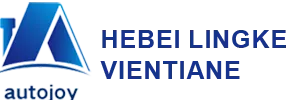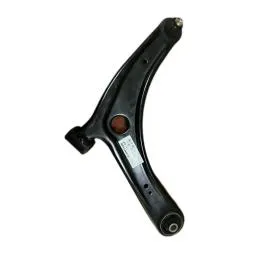
-
 Afrikaans
Afrikaans -
 Albanian
Albanian -
 Amharic
Amharic -
 Arabic
Arabic -
 Armenian
Armenian -
 Azerbaijani
Azerbaijani -
 Basque
Basque -
 Belarusian
Belarusian -
 Bengali
Bengali -
 Bosnian
Bosnian -
 Bulgarian
Bulgarian -
 Catalan
Catalan -
 Cebuano
Cebuano -
 Corsican
Corsican -
 Croatian
Croatian -
 Czech
Czech -
 Danish
Danish -
 Dutch
Dutch -
 English
English -
 Esperanto
Esperanto -
 Estonian
Estonian -
 Finnish
Finnish -
 French
French -
 Frisian
Frisian -
 Galician
Galician -
 Georgian
Georgian -
 German
German -
 Greek
Greek -
 Gujarati
Gujarati -
 Haitian Creole
Haitian Creole -
 hausa
hausa -
 hawaiian
hawaiian -
 Hebrew
Hebrew -
 Hindi
Hindi -
 Miao
Miao -
 Hungarian
Hungarian -
 Icelandic
Icelandic -
 igbo
igbo -
 Indonesian
Indonesian -
 irish
irish -
 Italian
Italian -
 Japanese
Japanese -
 Javanese
Javanese -
 Kannada
Kannada -
 kazakh
kazakh -
 Khmer
Khmer -
 Rwandese
Rwandese -
 Korean
Korean -
 Kurdish
Kurdish -
 Kyrgyz
Kyrgyz -
 Lao
Lao -
 Latin
Latin -
 Latvian
Latvian -
 Lithuanian
Lithuanian -
 Luxembourgish
Luxembourgish -
 Macedonian
Macedonian -
 Malgashi
Malgashi -
 Malay
Malay -
 Malayalam
Malayalam -
 Maltese
Maltese -
 Maori
Maori -
 Marathi
Marathi -
 Mongolian
Mongolian -
 Myanmar
Myanmar -
 Nepali
Nepali -
 Norwegian
Norwegian -
 Norwegian
Norwegian -
 Occitan
Occitan -
 Pashto
Pashto -
 Persian
Persian -
 Polish
Polish -
 Portuguese
Portuguese -
 Punjabi
Punjabi -
 Romanian
Romanian -
 Russian
Russian -
 Samoan
Samoan -
 Scottish Gaelic
Scottish Gaelic -
 Serbian
Serbian -
 Sesotho
Sesotho -
 Shona
Shona -
 Sindhi
Sindhi -
 Sinhala
Sinhala -
 Slovak
Slovak -
 Slovenian
Slovenian -
 Somali
Somali -
 Spanish
Spanish -
 Sundanese
Sundanese -
 Swahili
Swahili -
 Swedish
Swedish -
 Tagalog
Tagalog -
 Tajik
Tajik -
 Tamil
Tamil -
 Tatar
Tatar -
 Telugu
Telugu -
 Thai
Thai -
 Turkish
Turkish -
 Turkmen
Turkmen -
 Ukrainian
Ukrainian -
 Urdu
Urdu -
 Uighur
Uighur -
 Uzbek
Uzbek -
 Vietnamese
Vietnamese -
 Welsh
Welsh -
 Bantu
Bantu -
 Yiddish
Yiddish -
 Yoruba
Yoruba -
 Zulu
Zulu
High-Quality Car Control Arm for Front Right Lower Suspension Replacement
The car control arm (also known as an A-arm or wishbone) is a pivotal suspension component that connects the steering knuckle to the vehicle's chassis, allowing controlled wheel motion while absorbing road irregularities. Control arms ensure dynamic stability, cornering precision, and ride comfort. In modern vehicles, especially in front independent suspensions, the front right lower suspension control arm and front passenger side lower control arm are essential for safe steering and predictable handling.

- 2024 Global automotive suspension market size: $63+ billion, with control arms forming around 15% of total value (Source: MarketsandMarkets).
- Growth Drivers: Lightweighting Electrification Corrosion-resistant materials Precision CNC manufacturing
- OEM adoption of forged aluminum control arms increased by nearly 22% since 2017.
- Stricter ISO 9001 and IATF 16949 quality compliance for critical suspension parts.
- Increased use of tested control arm ball joints to extend product life and safety.
A typical car control arm consists of:
- Arm Body (cast, forged or stamped steel/aluminum)
- Bushings (rubber or polyurethane inserts, dampen vibration)
- Ball Joint (crucial pivot that enables up-down wheel articulation)
| Parameter | Typical Value/Range | Relevance |
|---|---|---|
| Material | Stamped Steel / Forged Steel / Forged Aluminum | Strength & Lifespan |
| Load Capacity | 4,000 – 12,000 N | Cornering & Impact Resistance |
| Bushing Material | Rubber / Polyurethane | Vibration Damping |
| Corrosion Protection | Electrocoated / Powder Coated | Environmental Resistance |
| Work Life | 80,000 – 150,000 km | Vehicle Service Interval |
| Certifications | ISO 9001, IATF 16949 | Quality & Traceability |
Front right lower suspension control arm & front passenger lower control arm are especially critical for vehicles equipped with MacPherson strut suspension, where proper geometry ensures optimal tire contact patch and safety under braking.
For more details & OEM fitment, click here.
- OEM Numbers: 4013A009, 4013A010
- Material: Forged steel / surface-treated with eco-friendly electrocoating
- Ball Joint: Pre-installed, factory lubricated
- Bushing: Premium EPDM rubber (greater than 80,000 km rated life)
- Applicable Position: Front passenger lower (RHS) / Front right lower
- Applications: Lancer, Outlander (2006~), ASX
- Certifications: Quality certified to ISO 9001:2015 & IATF 16949
Benefits: Advanced forging and CNC ensure high precision, fatigue resistance, and long lifespan. Strict ISO standards (ISO 9001 / IATF 16949) guarantee batch-to-batch consistency for the global aftermarket.
| Brand/Model | Material | Corrosion Test | Fatigue Life | Certifications | Warranty |
|---|---|---|---|---|---|
| LKControlarm 4013A009 | Forged Steel (powder coat) | ≥720h Salt Spray | ≥1 Million Cycles | ISO 9001, IATF 16949 | 24 Months |
| Meyle HD 116 050 0097 | Cast Aluminum (anodized) | 480h Salt Spray | 800,000 Cycles | ISO 9001 | 24 Months |
| Moog RK620620 | Stamped Steel (epoxy) | 400h Salt Spray | 500,000 Cycles | SAE, ISO | 12 Months |
- Automotive OEM / Aftermarket: Used in front and rear suspensions of sedans, SUVs & light commercial vehicles. OEMs recommend forged arms for electric vehicles due to weight and energy efficiency.
- Professional Motorsport: Upgraded control arm ball joints increase steering precision and cornering forces in rally and circuit racing.
- Industrial Vehicles: Used in mining, petroleum & chemical sector utility vehicles; corrosion-proof arms (like 4013A009) withstand acid, brine, and slurry splash.
- Flood-Prone Regions: Enhanced e-coating and sealed bushings extend service life, critical for water and deicer exposure areas (US North, Canada).
- Tailored Material Selection: Option for forged aluminum, corrosion-resistant steel, and surface treatments to match specific climates & industries.
- Design to Print: Engineering team supports unique geometry & bushing layouts for specialty vehicles and export markets.
- Fast Lead Time: Standard models ship within 1~2 working days; custom arms produced in 12~22 days.
- Certifications: Full compliance with ISO 9001:2015 & IATF 16949 automotive standards; all parts traceable by QR code.
- Warranty: 24 months/40,000km extended coverage, with responsive technical support & global shipping.
Company & Product Recognition:
- 10+ years as tier-1 supplier to local OEMs & Tier-2 global brands
- Collaboration with European TÜV/SGS testing labs for destructive, fatigue, and salt-spray tests
- Featured in multiple SAE Automotive Engineering publications
- Authoritative certifications & independent destructive testing
- Proven track record with tier-1 and fleet clientele
- Transparent, real-time traceability system (QR code)**
- Knowledgeable, technical customer support—in English, Spanish and Chinese
Contact our technical staff via sales@lkcontrolarm.com
- “Hot Forging of Suspension Arms and Its Strength/ Fatigue Analysis,” SAE Technical Paper 2019-01-1063
- “Aftermarket Control Arm Construction and Longevity,” IFSA Automotive Journal
- Control Arms, Ball Joints and Bushings: Failure Analysis & Standard Specification, Moog Technical Bulletin
- Auto Suspension Trends in OEMs 2022-24, AutomotiveWorld.com
- Global Market Data: MarketsandMarkets Automotive Suspension
-

 Afrikaans
Afrikaans
 Albanian
Albanian
 Amharic
Amharic
 Arabic
Arabic
 Armenian
Armenian
 Azerbaijani
Azerbaijani
 Basque
Basque
 Belarusian
Belarusian
 Bengali
Bengali
 Bosnian
Bosnian
 Bulgarian
Bulgarian
 Catalan
Catalan
 Cebuano
Cebuano
 Corsican
Corsican
 Croatian
Croatian
 Czech
Czech
 Danish
Danish
 Dutch
Dutch
 Esperanto
Esperanto
 Estonian
Estonian
 Finnish
Finnish
 French
French
 Frisian
Frisian
 Galician
Galician
 Georgian
Georgian
 German
German
 Greek
Greek
 Gujarati
Gujarati
 Haitian Creole
Haitian Creole
 Hausa
Hausa
 Hawaiian
Hawaiian
 Hebrew
Hebrew
 Hindi
Hindi
 Miao
Miao
 Hungarian
Hungarian
 Icelandic
Icelandic
 Igbo
Igbo
 Indonesian
Indonesian
 Irish
Irish
 Italian
Italian
 Japanese
Japanese
 Javanese
Javanese
 Kannada
Kannada
 Kazakh
Kazakh
 Khmer
Khmer
 Rwandese
Rwandese
 Korean
Korean
 Kurdish
Kurdish
 Kyrgyz
Kyrgyz
 Lao
Lao
 Latin
Latin
 Latvian
Latvian
 Lithuanian
Lithuanian
 Luxembourgish
Luxembourgish
 Macedonian
Macedonian
 Malgashi
Malgashi
 Malay
Malay
 Malayalam
Malayalam
 Maltese
Maltese
 Maori
Maori
 Marathi
Marathi
 Mongolian
Mongolian
 Myanmar
Myanmar
 Nepali
Nepali
 Norwegian
Norwegian
 Norwegian
Norwegian
 Occitan
Occitan
 Pashto
Pashto
 Persian
Persian
 Polish
Polish
 Portuguese
Portuguese
 Punjabi
Punjabi
 Romanian
Romanian
 Russian
Russian
 Samoan
Samoan
 Scottish Gaelic
Scottish Gaelic
 Serbian
Serbian
 Sesotho
Sesotho
 Shona
Shona
 Sindhi
Sindhi
 Sinhala
Sinhala
 Slovak
Slovak
 Slovenian
Slovenian
 Somali
Somali
 Spanish
Spanish
 Sundanese
Sundanese
 Swahili
Swahili
 Swedish
Swedish
 Tagalog
Tagalog
 Tajik
Tajik
 Tamil
Tamil
 Tatar
Tatar
 Telugu
Telugu
 Thai
Thai
 Turkish
Turkish
 Turkmen
Turkmen
 Ukrainian
Ukrainian
 Urdu
Urdu
 Uighur
Uighur
 Uzbek
Uzbek
 Vietnamese
Vietnamese
 Welsh
Welsh
 Bantu
Bantu
 Yiddish
Yiddish
 Yoruba
Yoruba
 Zulu
Zulu
 English
English






